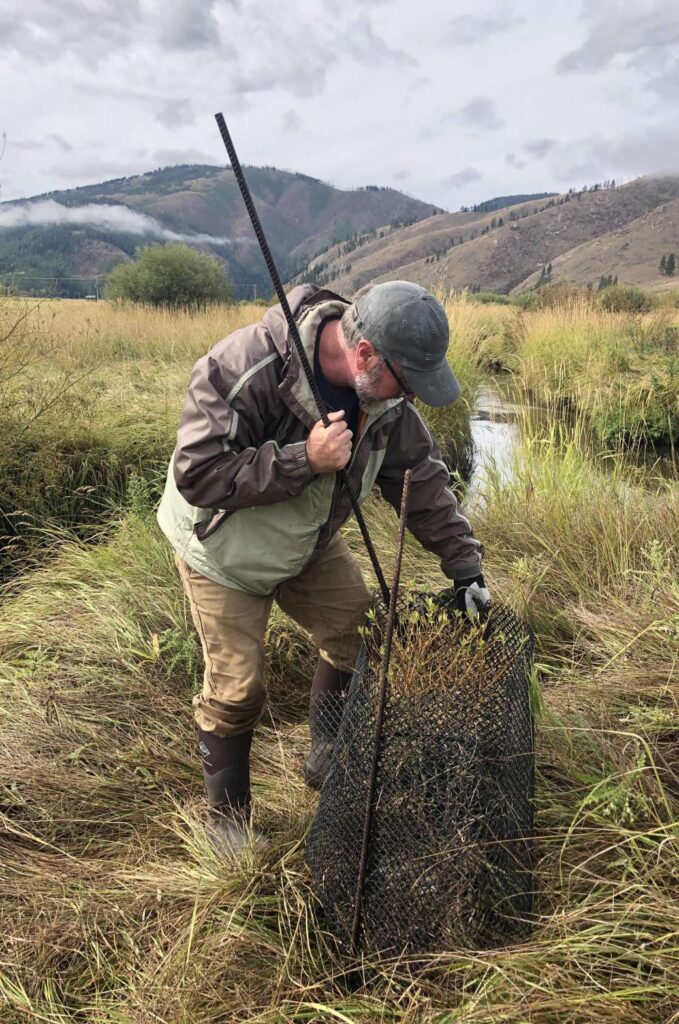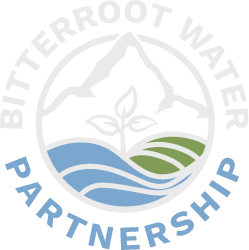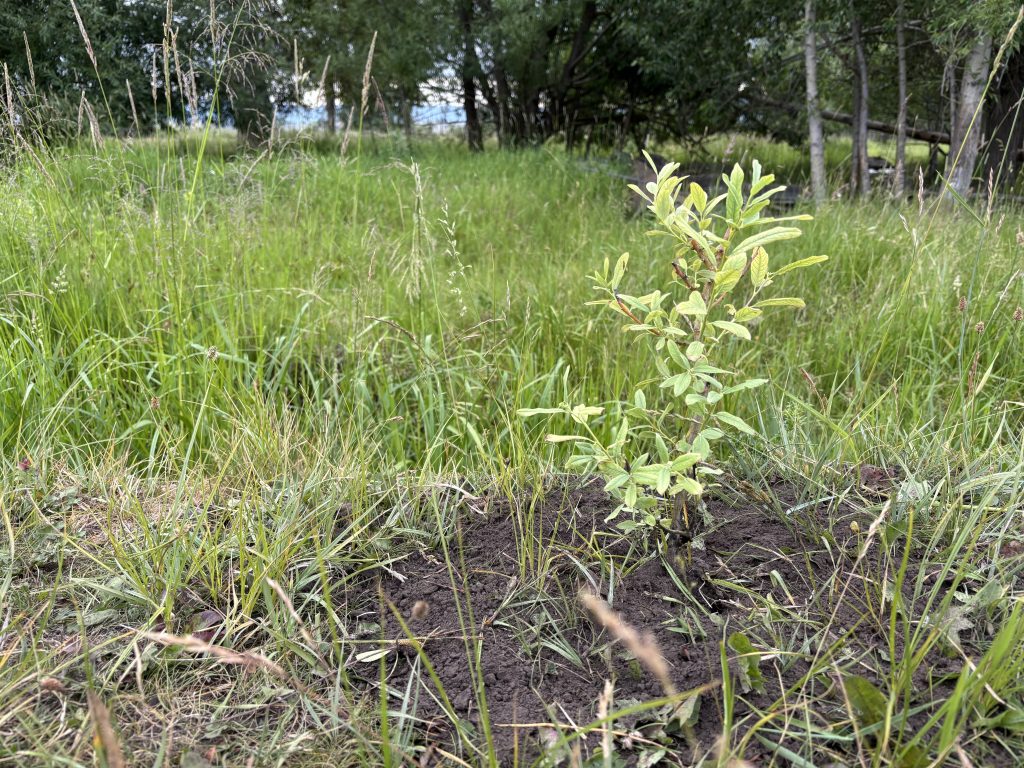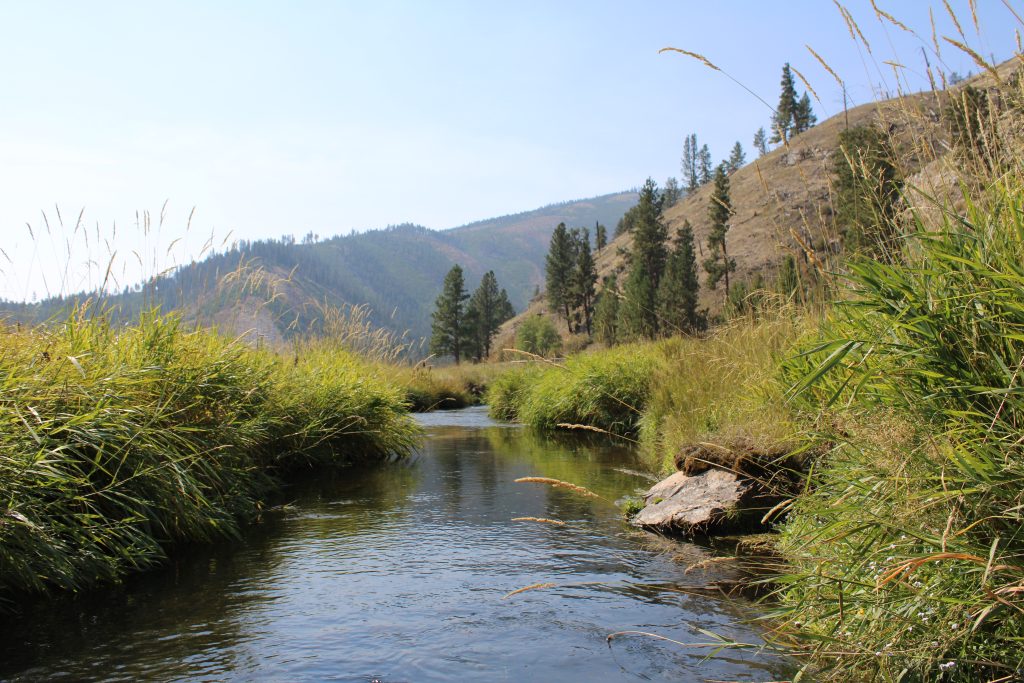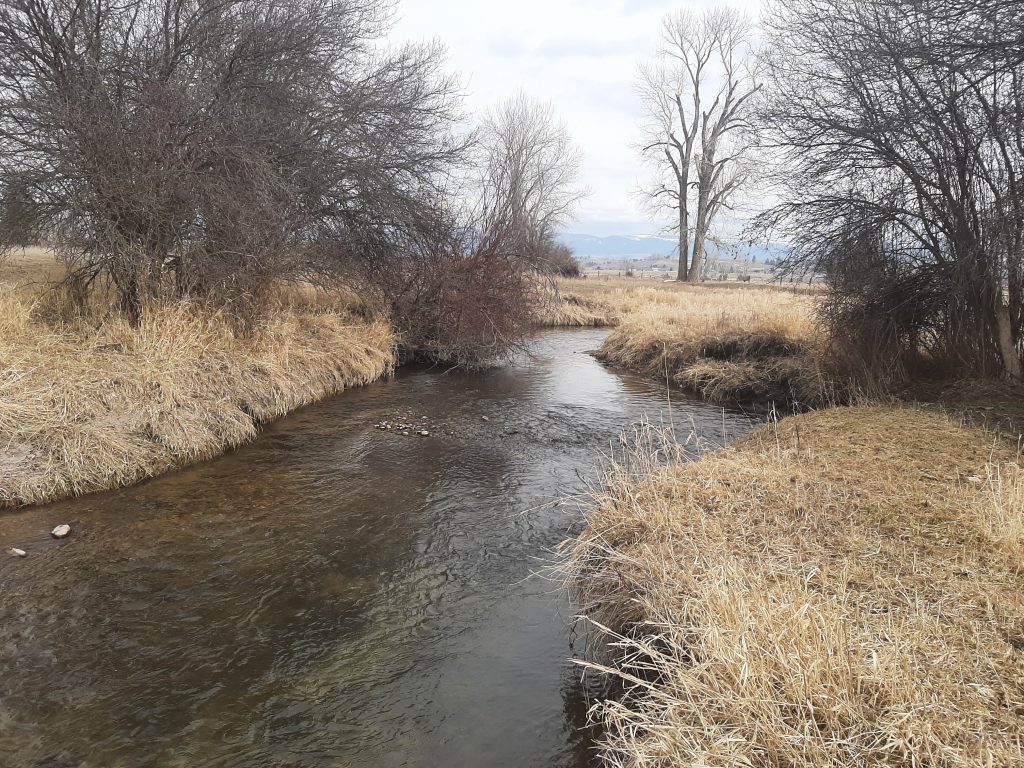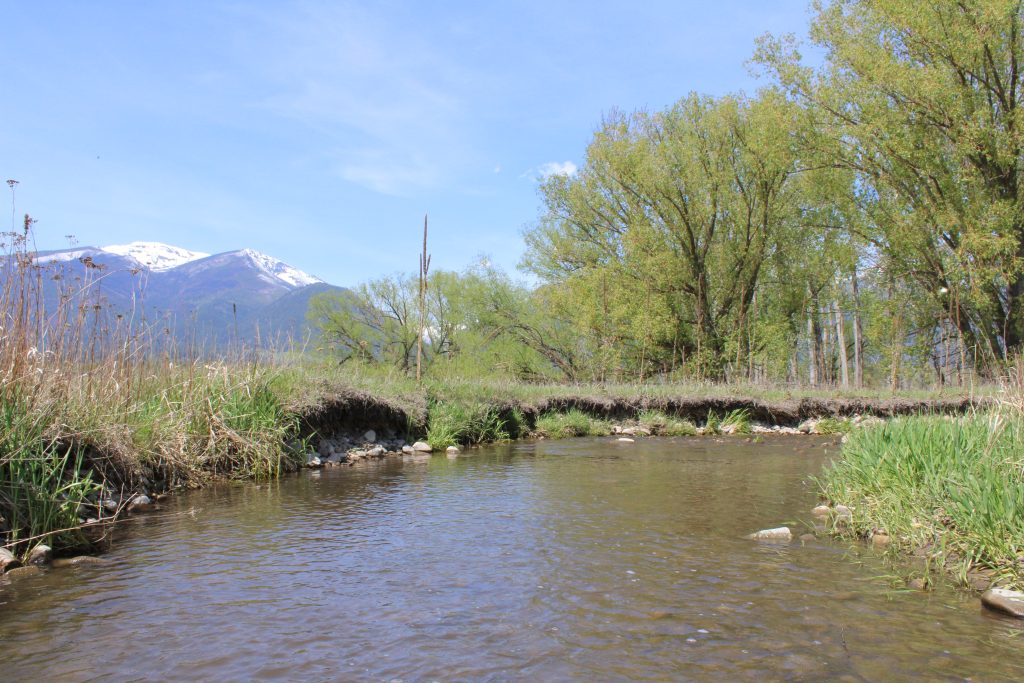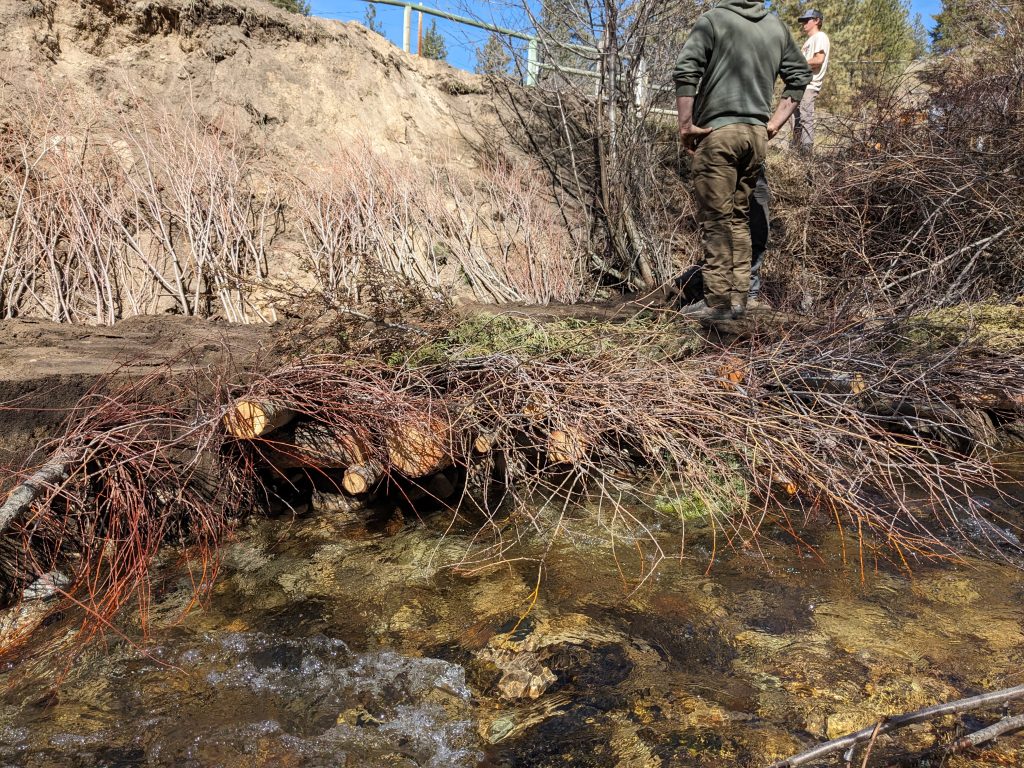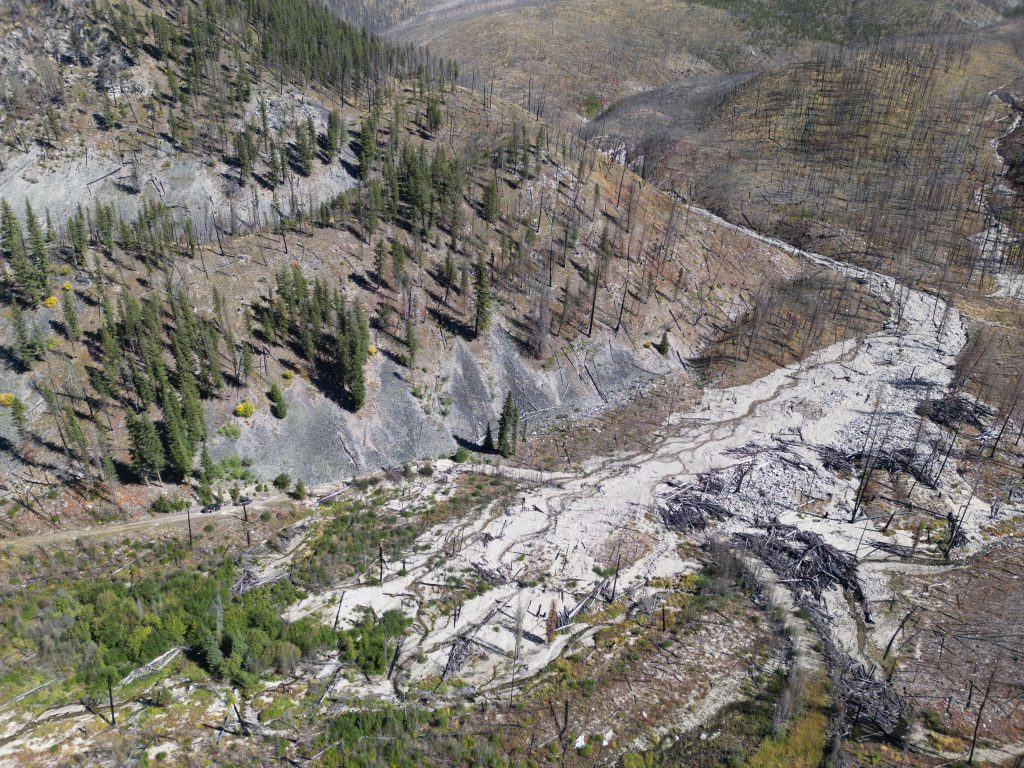Impairments
39 streams in the Bitterroot watershed, including the main stem of the Bitterroot River, are considered impaired by the Montana Department of Environmental Quality. Our restoration projects reduce sediment and temperature pollution in our waterways by restoring stream bank vegetation. This “riparian habitat” serves a critical role in our water cycle.
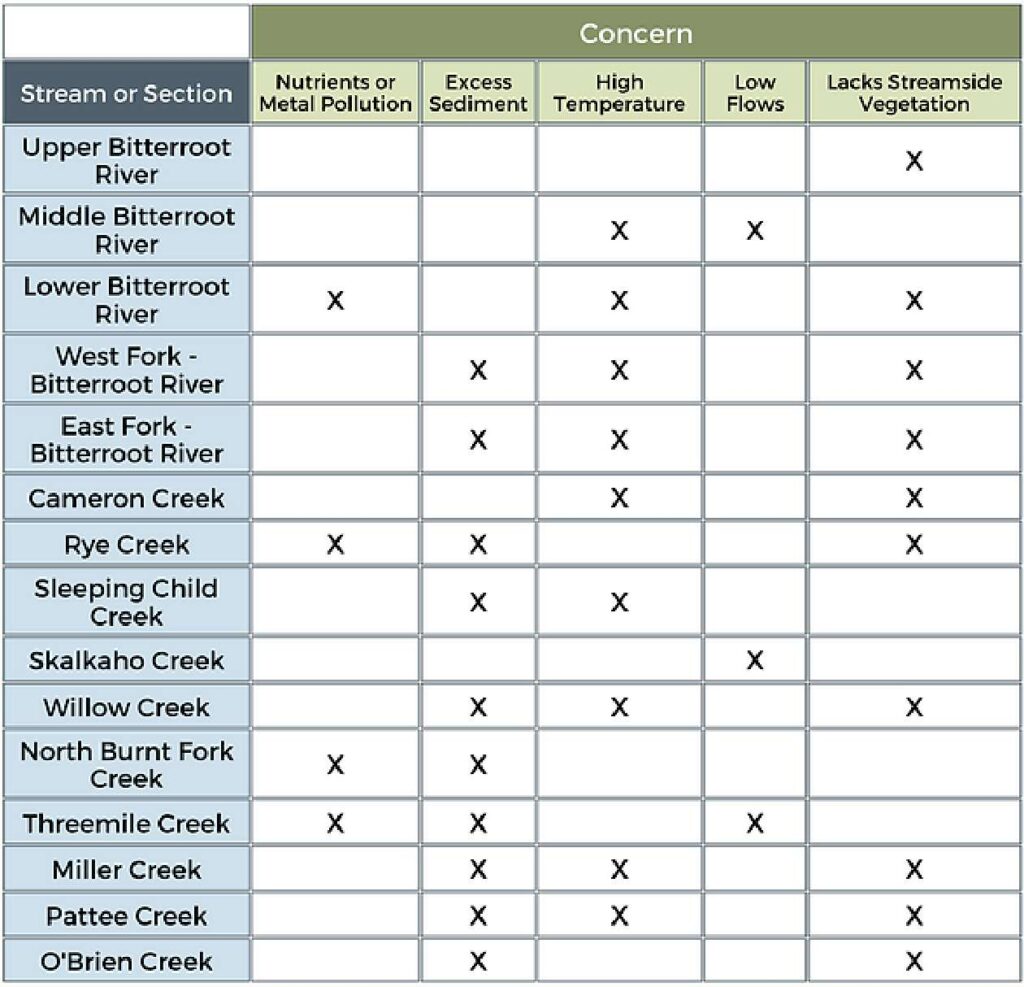
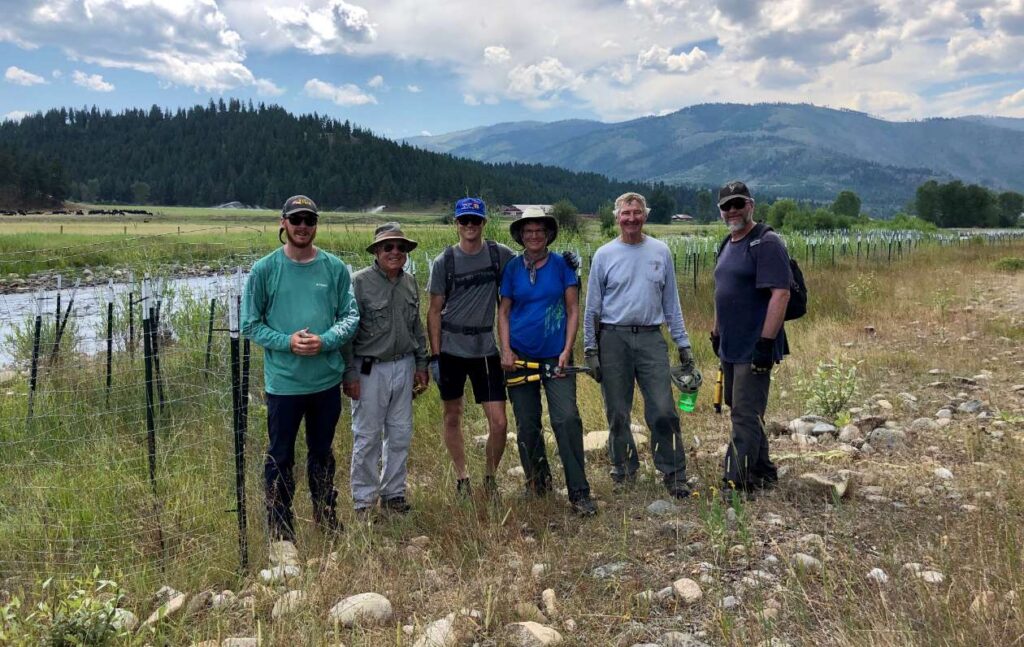
Restoring Streamsides
The Bitterroot Water Partnership restores riparian habitat through stream bank bioengineering. This approach establishes in-stream rock and log structures and natural vegetation with healthy root systems on stream banks.
Rather than relying on structural additions like rip rap and hard armoring, this approach creates more sustainable results. Not only does rip rap concrete degrade the important functions of healthy riparian zones, push erosion problems downstream due to lack of friction, and is often more expensive, it sure is an eye sore!
HEALTHY RIPARIAN ZONES
